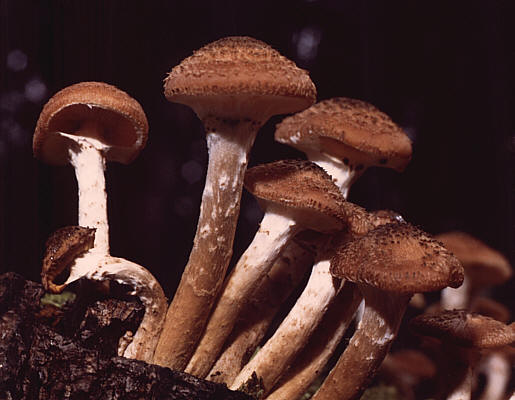
93 years old Japanese as first got the official confirmation that he had survived explosions of both American atomic bombs dropped under the end II world war on his country in Hiroshima and Nagasaki - the powers of Nagasaki informed.
Tsutomu Yamaguchi earlier received the certificate already that there was "hibakusha", that is it was confirmed victim of explosion of atomic bomb from Nagasaki from 9 August 1945 r. At present that the attack had also survived on the Hiroshima three days earlier.
he was on 6 August 1945 Yamaguchi in the business delegation in the Hiroshima. He experienced serious poparzeń in the result of the explosion of the atomic bomb and had to spend the night in the city. He came back before second American attack to his house in Nagasaki near at hand.
About how much we know, then the first person who it pretended officially to be confirm that both had survived air raids - the representative of the powers of Nagasaki said. - Possible, that there are more such persons - he reserved.
The certificate authorizes the victims of atomic explosions to such reliefs, how free medical investigations and the turn of the costs of the funeral. However the services to which Yamaguchi is entitled will not grow up after the confirmation that both survived explosions.
The Japan is the only country which was attacked for the help he protects atomic. 140 the persons tys. got lost in the Hiroshima, and 70 tys. the Attacks survived in Nagasaki 260 tys. of the persons who because of the exposure on the radiation suffer on various illnesses in this cancer.
source:gazeta
Survived the explosions of atomic bombs and in the Hiroshima, and Nagasaki
The the smallest organism in the world

Armillaria ostoyae is a fungus commonly known as a Honey mushroom, and sometimes called Shoestring Rot.
This is the most common variant in the western U.S., of the group of species that all used to share the name Armillaria mellea. Armillaria ostoyae is quite common on both hardwood and conifer wood in forests west of the Cascade crest. The mycelium attacks the sapwood and is able to travel great distances under the bark or between trees in the form of black rhizomorphs ("shoestrings").
The disease is of particular interest to forest managers, as the species is highly pathogenic to a number of commercial softwoods, notably Douglas-fir (Pseudotsuga menziesii), true firs (Abies spp.) and Western Hemlock (Tsuga heterophylla). A commonly prescribed treatment is the clearcutting of an infected stand followed by planting with more resistant species such as Western redcedar (thuja plicata) or deciduous seedlings. The removal of stumps (stumping) has been used to prevent contact between infected stumps and newer growth resulting in lower infection rates. However, it is unknown if the lower infection rates will persist as roots of young trees extend closer to the original inoculum from the preceding stand. The use of another fungus, Hypholoma fasciculare has been shown in early experiments to competitively exclude Armillaria ostoyae in both field and laboratory conditions, but further experimentation is required to establish the efficacy of this treatment.
A mushroom of this type in the Malheur National Forest in the Strawberry Mountains of eastern Oregon, U.S. was found to be the largest fungal colony in the world, spanning 8.9 km² (2,200 acres) of area. This organism is estimated to be 2,400 years old. The fungus was written about in the April 2003 issue of the Canadian Journal of Forest Research. While an accurate estimate has not been made, the total mass of the colony may be as much as 605 tons. If this colony is considered a single organism, then it is the largest known organism in the world by area, and rivals the aspen grove "Pando" as the known organism with the highest living biomass.
In 1992, a relative of the Strawberry Mountains clone was discovered in southwest Washington state. It covers about 6 km² (1500 acres).
Another "humongous fungus" is a specimen of Armillaria bulbosa found at a site near Crystal Falls, Michigan covers 0.15 km² (37 acres), and was published in Nature.
source:wikipedia
o 20:56 0 komentarze Etykiety: Armillaria, in, organism, ostoyae, smallest, the, World
Sub-$2000 Tata Nano is Officially The World's Cheapest Car

India's Tata Nano has been in the works for some time, but pre-orders are starting today with a MSRP of 100,000 rupees (under $2000)—officially making it the cheapest car in the world.
The price jumps up to around $2400 when you factor in the additional costs associated with excise fees, transportation, taxes, etc—but the allure of a car that ridiculously cheap is going to be powerful not only in India, but around the world. That's why the Tata group has plans for releasing a version for the European market in 2011 and North American market beyond that (although those versions will undoubtedly be more expensive).
Of course, you get what you pay for, and $2000 isn't going to buy you even basic luxuries like air-conditioning—but it will get you over 50 mpg. The question of reliability is also an issue, but it couldn't be worse than that gas guzzling beater you are driving around right now could it?
source :gizmodo

